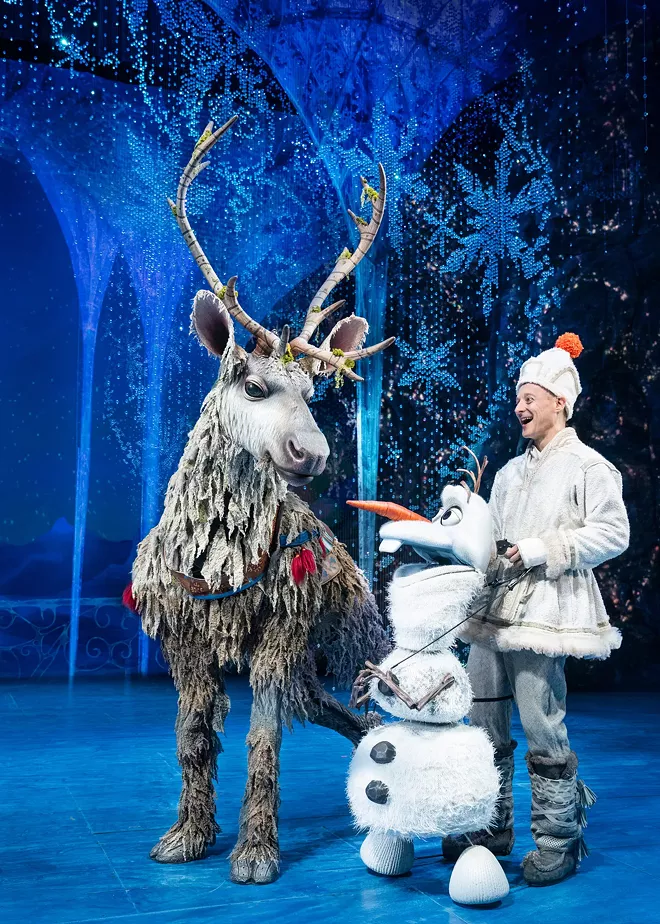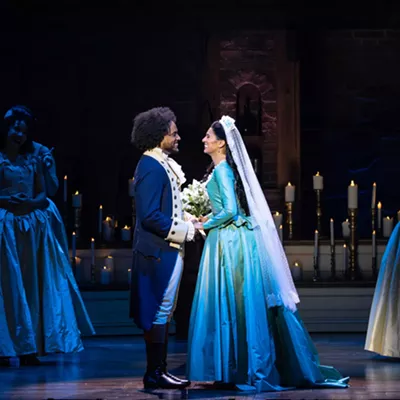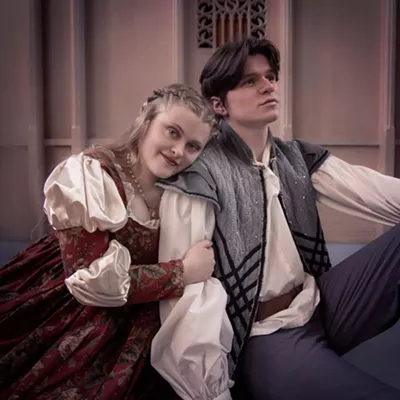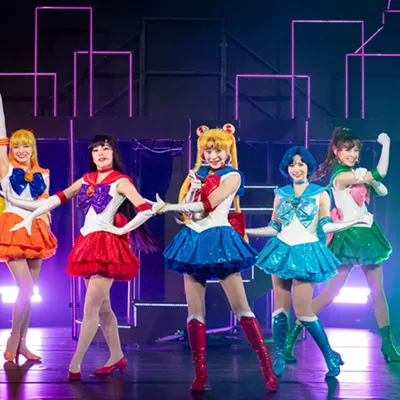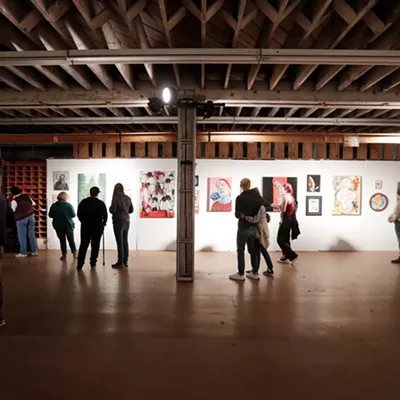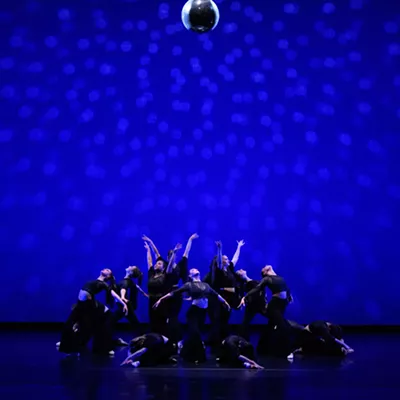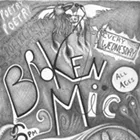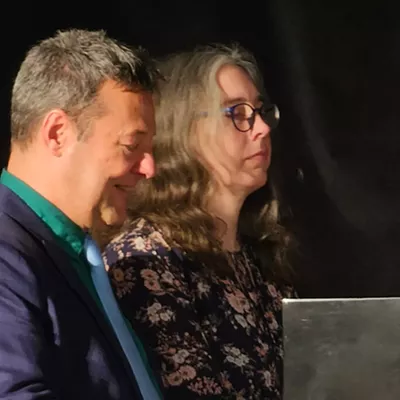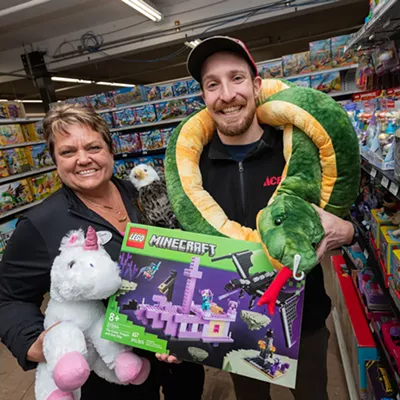When the essayist and critic Frank Rich classified some of sculptor Michael Curry's early work as puppetry, Curry was not amused. But as subjective as Rich's review might have seemed at the time, the attention led to some transformative creative opportunities for Curry.
In the mid-1990s, he was enlisted to co-design the masks and massive puppets for The Lion King stage musical. It was a career-defining production that showcased Curry's talents and enabled him to push the technical and aesthetic boundaries of puppetry. Later, as a veteran Disney artist, Curry was asked to do extensive design work on the stage musical adaptation of Frozen, including the intricate Sven and Olaf puppets.
Ahead of Frozen's 12-day run in Spokane as part of the Best of Broadway series, Curry talked to the Inlander about his work, his artistic philosophies, and how they shaped his perspective on Sven the reindeer and Olaf the snowman. His answers have been edited for space.
INLANDER: What drew you to this career as a visual and concept designer?
CURRY: It was more fortuitous coincidence with some real manicuring. At age 12 or 13, I knew I wanted to be a sculptor and a painter. More precisely, I wanted to be Michelangelo, and then when I learned more, I wanted to be Picasso. At 23 years old, I moved to New York to become Picasso.
That was in 1985, and New York had a lot of experimental street art. And I was refreshed by the idea that artists were working outside the gallery. So, I made a series of sculptures that I floated in the rivers around New York City. They were big fiberglass sculptures of philosophers' heads, 7 feet tall. The way these sculptures behaved on the water made me aware that movement was the fourth dimension of sculpture.
Then some critics started becoming interested in this idea of movement. Frank Rich was the first to ever call my work puppetry. And, boy, was I pissed. But, lo and behold, various people started seeing the work, including [avant garde artist] Julie Taymor, and Siegfried and Roy, the magicians, who were in New York playing Radio City Music Hall.
Looking back, The Lion King was a career milestone for you. Did it seem ambitious at the time?
I had been working with Disney about five years before Julie [Taymor] was called in to do The Lion King. And I'd done really complicated shows already with Julie, big operas around the world. So, yeah, I knew it was going to be complicated.
Now it seems like something that's belonged there forever, but at the time it was brand new. I don't know how we pulled it off. In The Lion King, you have Turkish shadow puppets, Japanese bunraku puppets, African masked dance. Seven or eight different cultures are encapsulated in the techniques. Puppetry generally tries to hide puppeteers in a box or put them in black. But we really embraced it, which was a big deal for The Lion King, this idea of exposing the puppeteer. And not only exposing them, but having them be a world-class Broadway actress, singer, dancer.
How did that experience on The Lion King ultimately inform your work on Frozen: The Musical?
We found that when you mess with a comedic character, you piss off your audience. We learned this on The Lion King. Zazu and Timon, they look pretty much on model, as we say, meaning that they look like the animation. With Olaf, if I had done three snowballs in my artistic [interpretation], I would just simply lose people.
Sven was unique because he was already in the hothouse when we started the show. [Director] Michael Grandage was worried he would not work. He thought he would be distracting to the love story between Anna and Kristoff. And I said, 'No, I promise that he will work,' because Christoph has to have the validity of being a hermit, a mountain man, an outcast. How do you achieve that goal with the audience? Give him a rustic creature. So, when you see the show, look at the body language. Sven is always anticipating a line from Christoph or urging him to say it.
Olaf is on model and controlled by a visible puppeteer, but with Sven you went for a very realistic design that's fully inhabited by a performer. Why the different approaches?
I did a whole version [of Sven] where we had classic outside puppeteers like War Horse or something. That did get in the way of the love story when there was a crew around them. So I set this goal where I want to fool the eye, because I see this as a magic illusion as much as anything.
Sven was one of the most complex ergonomic puppets we've ever made, and it requires some of the most specialized performers because of the arm strength — the sort of person who can walk on their hands for five minutes. But they really turned out to [have] some naturalistic movements that have had a lot of people fooled. I've had people asking, 'Is that a costume on an animal?'
Are the demands on the performer the reason why you used high-tech materials like carbon fiber in the costume design?
Those sort of engineering problem-solving things are the ones that fascinate me the most. I think a lot about comfort, fit and performance. Sven is probably one of the highest examples of that, because adding any weight to his upper body is weight that [the performer] has to support on his arms. The mechanism that's inside, you'd be surprised how delicate and light it is. It looks like the interior of a bird. There are no solid masses. The boots also have a very unique stilt that's attached to the foot and the shin.
Now that the North American tour of Frozen has over 1,000 performances to its name, do you think your puppets have filled the role you intended?
I was worried that they would be out of place with all these other human characters. But they are actually a bonding agent. When these fantastic objects are presented, they enliven and improve the cast around them. It redirects you into your imagination. We've also done a lot with lighting and video to evoke these massive landscapes. But more than anything, our physical set, costumes and puppetry, not to mention the smoke and lighting and the cool effects, they don't feel like technology. They feel like an analog story. ♦
Disney's Frozen • July 24-Aug. 4; Tue-Sat at 7:30 pm, also Sat at 2 pm and Sun at 1 and 6:30 pm • $39.50-$160 • First Interstate Center for the Arts • 334 W. Spokane Falls Blvd. • broadwayspokane.com • 509-279-9000
Correction: This story has been updated as of 10 am on July 22 to correct the name spellings of Frozen character Kristoff, as well as actor Collin Baja.

